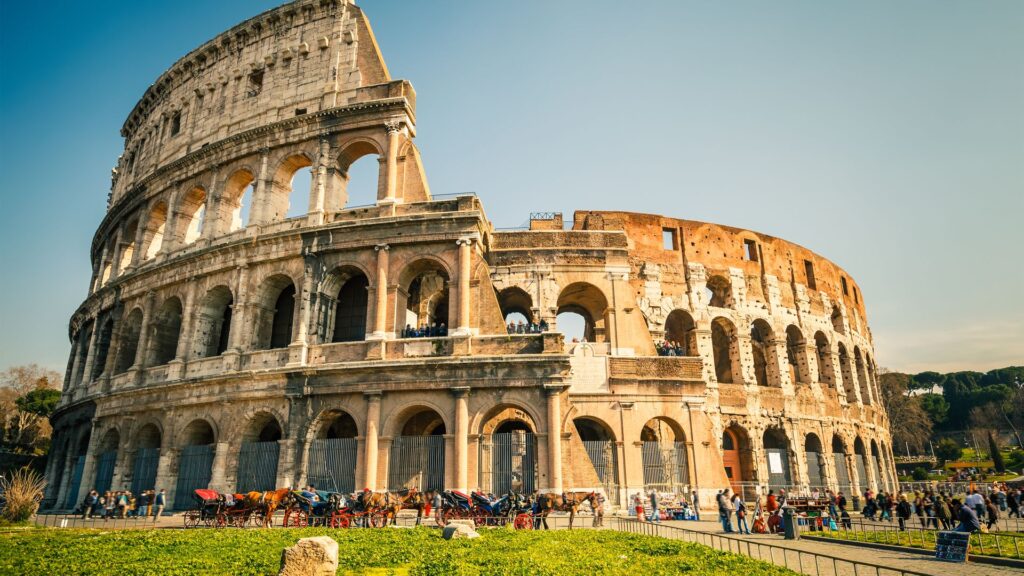Palermo, located on the northern coast of the island of Sicily in Italy, is a vibrant and bustling city with a rich history and culture. Founded by the Phoenicians in the 8th century BC, Palermo has been ruled by various civilizations including the Greeks, Romans, Arabs, Normans, and Spanish, all of which have left their mark on the city's architecture, cuisine, and traditions.
One of the most iconic sites in Palermo is the Norman Palace, a stunning example of Arab-Norman architecture that houses the famous Palatine Chapel with its intricate mosaics. The city is also home to a number of other historic churches, such as the Cathedral of Palermo and the Church of San Giovanni degli Eremiti, as well as ancient markets like the Vucciria and Ballarò where visitors can sample local delicacies and shop for souvenirs.
Palermo is known for its vibrant street life, with bustling markets, lively piazzas, and colorful festivals taking place throughout the year. The city's cuisine is also a highlight, with dishes such as arancini (rice balls filled with meat, cheese, or vegetables) and panelle (chickpea fritters) being popular among locals and visitors alike.
In addition to its historical and cultural attractions, Palermo boasts beautiful beaches, crystal-clear waters, and stunning views of the surrounding mountains. The city is also a gateway to the rest of Sicily, with easy access to other popular destinations like Taormina, Agrigento, and the Aeolian Islands.
Overall, Palermo is a dynamic and vibrant city that offers visitors a unique blend of history, culture, and natural beauty. Whether you're exploring its ancient ruins, sampling its delicious cuisine, or simply soaking up the sun on its beaches, Palermo is a destination that is sure to captivate and charm you.
What to explore:
1. Palermo Cathedral: A stunning example of Norman architecture, this cathedral is a must-see for visitors to Palermo. Inside, visitors can admire beautiful mosaics, sculptures, and paintings.
2. Teatro Massimo: One of the largest opera houses in Europe, Teatro Massimo is a stunning example of neoclassical architecture. Visitors can take a guided tour of the theater, or attend a performance if one is scheduled during their visit.
3. Quattro Canti: Also known as Piazza Vigliena, this baroque square is a historic landmark in Palermo. The square is adorned with four fountains and statues representing the Four Seasons.
4. Palermo Botanical Gardens: Located near the city center, these lush gardens are a peaceful oasis in the bustling city. Visitors can wander among exotic plants, trees, and flowers, and enjoy a leisurely stroll through the park.
5. Capuchin Catacombs: For a unique and somewhat macabre experience, visitors can explore the Capuchin Catacombs, home to over 8,000 mummies. The catacombs offer a fascinating glimpse into Sicilian history and traditions.
6. Norman Palace and Palatine Chapel: The Norman Palace is a UNESCO World Heritage site that dates back to the 9th century. Visitors can explore the palace's ornate interior and the stunning Palatine Chapel with its intricate mosaics.
7. Mercato Ballarò: One of the city's oldest markets, Mercato Ballarò is a bustling and vibrant place to experience local Sicilian culture. Visitors can shop for fresh produce, meats, cheeses, and local specialties, or simply soak up the atmosphere.
8. Monreale Cathedral: Just a short drive from Palermo, the Monreale Cathedral is another stunning example of Norman architecture. The cathedral is famous for its intricate mosaics depicting biblical scenes.
9. Monte Pellegrino: For stunning views of Palermo and the surrounding area, visitors can hike or drive up to the top of Monte Pellegrino. At the summit, there is a sanctuary dedicated to Santa Rosalia, the patron saint of Palermo.
10. Orto Botanico: This botanical garden, located near the Palermo Cathedral, is a peaceful retreat from the city streets. Visitors can explore a variety of plants, trees, and flowers, as well as an ancient Roman cistern.
